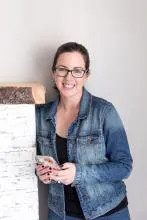Looking to brush up your writing skills or learn a new trick or two? You've come to the right place! Check back weekly for helpful tips and articles that make your writing better.

Do you have a crowd of characters in your head, each with their own personality and description? Have you played out imaginary scenes for these or some other unknown characters? Have you developed some plot ideas that send them on an adventure, into the arms of a lover, or into a self-reflective journey?
Sounds like you have the start of a novel!
Oh, wait. What’s that? You also have another series of characters and scenes that show up while you are listening to music, or on a long car ride? That’s a whole other book waiting to happen!
Ideas are wonderful. They are sparks for future arcs, conflicts, and kissing-in-the-rain moments that your book could share.
However, when we have too many ideas as writers, it becomes difficult to decide where to begin, and instead of excitement, we may be left with an overwhelming feeling of inaction.
If you have too many book ideas swirling around in your head, here are some tips on how to narrow things down so you can start writing.
Start with the one you are most excited about
There’s likely one plot point or scene that you keep playing in your head or one where you can hear your characters speaking. Take that foundation of an idea and start crafting some scenes to expand it. As you explore, see where these new ideas takes you. Your plot doesn’t need to be fully developed before you start writing.
Start with the one with irresistible characters
Maybe you are less sure about location or the plot drivers than you are about the characters. You know the conflict, heartache, drama or action you want to put them into. If this is the case, start by outlining these characters and give them a place to start their journey. Where does that take them? See if the plot develops as you go.
Create an outline
Even if you usually write without planning first, doing some outlining around the plot points you already have can help give you some direction. Use this outline to test whether your idea is robust enough to develop fully or if it needs to be shelved.
Don’t discount a crossover opportunity
Maybe that character that you started writing about in Book A ends up not really fitting in with the story. But that doesn’t mean the character has to disappear. Save them for Book B (or C or D).
(Tip: StoryBilder has a way to create your characters and share them with future stories.)
Experiment with different formats beyond a novel
When you start writing a story with plans of it becoming a novel, you may lead yourself to a logical ending sooner than you expected. And that’s ok. It can become a short story or a novella or use it to help refine your writing. Depending on the length, you could also submit it to contests!
Just start with one – and let it go if it goes no where.
Sorry fellow writers, but sometimes, the small spark of an exciting story ends up just being a spark that can’t turn into a fire. Save whatever writing you do, consider it a practice, and move on to the next idea! Also, sometimes ideas just need to find their right time. Park it for now, and revisit it later.
No matter how you decide to approach your novel idea, you just need to start! It doesn’t have to be a fully formed idea to give it a go. Jump in and see where your worlds and characters take you.
⤟ backstory ⤠
September 2025
August 2025
July 2025
May 2025
April 2025
March 2025
February 2025
January 2025
December 2024
November 2024
Copyright © 2025. All rights reserved
StoryBilder and the StoryBilder logo are trademarks of StoryBilder, Ltd.










